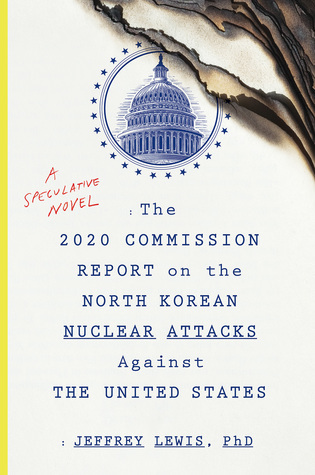More on this book
Community
Kindle Notes & Highlights
Read between
April 28 - May 4, 2020
March 2020 represent the greatest calamity in our nation’s history.
whether our emergency preparedness efforts were sufficient,
Should the United States seek to reduce nuclear dangers and ultimately eliminate these weapons?
A320 sometimes suffered a loss of power in the cockpit.
United States had initiated a covert program of air and naval probes as part of an extensive psychological operations campaign against the regime of North Korean dictator Kim Jong Un.
If China doesn’t get little Rocket Man under control, we’re going to start RATTLING THE POTS AND PANS.
“PRESIDENT SAYS KNOCK SOME SENSE INTO THAT FAT CRAZY KID.”
then followed a path out into the Yellow Sea that retraced the route flown by a US bomber less than a month before.
North Korean military commanders worried that their radars were not detecting all US bomber flights.
In 2010, after North Korea began shelling a South Korean island, it took some twenty minutes for the key national security staff to assemble in the bunker.
we didn’t take time to go back over what we thought he knew.
We stopped talking about a rescue and started talking about revenge.
South Korea’s eventual response was anemic: satellite images later showed that its retaliation had done little or no damage to the North Koreans.
‘What’s a proportionate response for more than one
hundred schoolchildren? I don’t think there is such a thing.’”
He did not want Kim Jong Un to think this was the start of a war.
All agreed, however, that the Americans had been slow to recognize that South Koreans no longer saw themselves as junior partners in the defense of their own country and its citizens.
Moon had expressed his frustration with these constraints. “The issues on the rules of engagement . . . should be discussed, although it is under the [United Nations Command’s] control,” President Moon publicly said. “The people would generally think of a rule of engagement as something that permits our soldiers to at least fire warning shots if a bullet from the North Korean is fired at us.”
None of Moon’s surviving aides appear to have believed that the strike would escalate into a general war.
I don’t even use Twitter.”
chaotic and uncoordinated response by the Trump administration may have allowed the crisis to careen out of control.
“there are no dissidents in China.”
Donald J. Trump @tehDonaldJTrump
China tested its first nuclear weapon in 1964, and within a few years Richard Nixon had opened relations with the People’s Republic.
The immediate assumption around Kim was that the missiles were either American or fired on orders from the United States.
They believed that any invasion of North Korea would begin with an effort to isolate Kim Jong Un from his nuclear forces and, in all probability, to kill him.
“well aware of [the] foolishness of Saddam Hussein who allowed the deployment of the world’s most powerful war forces just at its doorstep.”
swarm of drones
North Korean units at nine different locations all over the country fired fifty-four nuclear-armed ballistic missiles against targets in South Korea and Japan, as well as eight more missiles at American forces stationed in Okinawa and Guam. From the first launch to the last, the entire attack occurred in a span of about half an hour.
many commentators have compared the intelligence failure that struck the United States that day to the US government’s failure to anticipate the surprise attack by Japan on Pearl Harbor in 1941,
The two decided to take no action.
“background of expectation”—the assumptions and beliefs that allow us to make sense of confusing and contradictory information.
Not one of the eight missiles fired at US bases in Okinawa and Guam struck its target.
the president simply did not believe that North Korea’s long-range missiles worked.
Kim’s plan was to respond to every American escalation with an escalation of his own, until the price was simply too high for Trump.
Allied commanders threw large numbers of aircraft and special forces at the mission of “Scud hunting,” only to fail miserably.
About a dozen Hwasong-14 and Hwasong-15 missiles were successfully launched against the nation during the early-morning hours of Sunday, March 22.
Instead, once a launch was detected, controllers ordered aircraft to fly to the launch location to destroy the launcher before it could escape to reload and fire again.
Far from former president Trump’s claims of mass looting and violence, she said, it was a day when “ordinary people saved each other.”
probably responsible for the first-ever recorded outbreak of plague in the New York City area.
following his impeachment and subsequent acquittal in the Senate on a party-line vote.
Should the United States seek the elimination of nuclear weapons?


